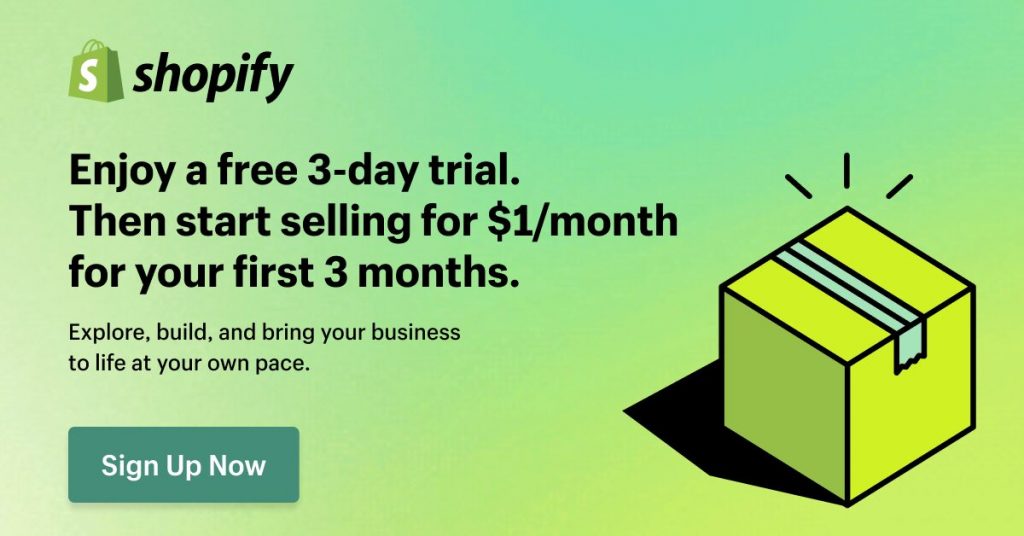Poshmark Business Model: How Does Poshmark Make Money? [2025 Deep Dive]

Poshmark has revolutionized the resale commerce landscape since its founding in 2011, establishing itself as a pioneer in social shopping that perfectly captures the intersection of sustainability, community, and commerce. As we enter 2025, understanding the Poshmark business model has become crucial for resellers looking to maximize profits, brands exploring new distribution channels, and entrepreneurs seeking to build their own social commerce platforms.
The company’s unique approach to peer-to-peer selling, combined with social networking features, has created a thriving ecosystem where over 80 million registered users buy and sell everything from designer fashion to home goods. But how exactly does Poshmark make money, and what makes their business model so successful in the competitive e-commerce landscape?
This comprehensive analysis will dissect every aspect of Poshmark’s revenue streams, from their primary commission structure to emerging monetization opportunities, providing valuable insights for anyone looking to understand or replicate their success in the circular economy space.
>> You may also like:
- 7 Best Selling Apps Like Poshmark
- 8 Best Apps To Sell Clothes Instantly
- 10 Local Selling Apps Like Facebook Marketplace
What is Poshmark?
Platform Introduction: Social Commerce Marketplace
Poshmark operates as a social, peer-to-peer marketplace that combines traditional e-commerce with social media engagement. Unlike conventional online marketplaces, Poshmark emphasizes community building through features like “Posh Parties,” sharing, and following, creating an engaging shopping experience that keeps users actively participating.
The platform primarily focuses on fashion, beauty, and home goods, with sellers ranging from individuals decluttering their closets to boutique owners and even major brands. What sets Poshmark apart is its emphasis on authentic user-generated content and social proof, where buyers can see real people wearing and using products before making purchases.
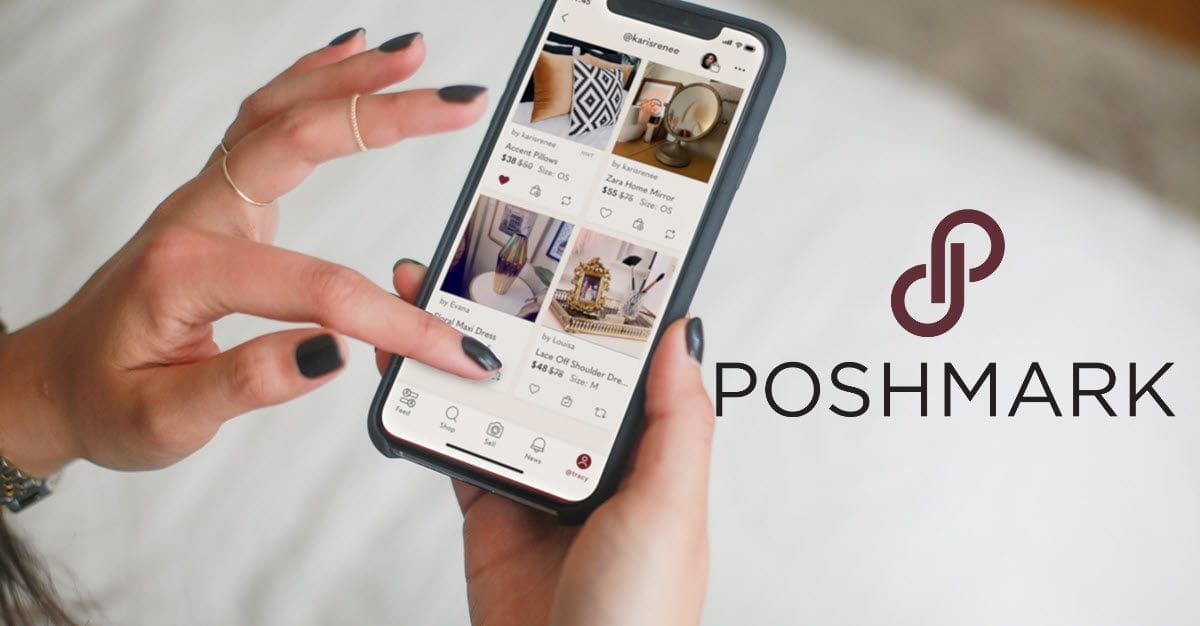
Founding Story & Growth Milestones (2011–2025)
Founded by Manish Chandra, Tracy Sun, Gautam Golwala, and Chetan Pungaliya in 2011, Poshmark began with a simple mission: make shopping and selling simple, social, and sustainable. The company achieved several significant milestones:
- 2011: Platform launch with focus on women’s fashion
- 2019: Expanded to men’s fashion and home goods
- 2021: Successful IPO on NASDAQ (POSH)
- 2023: Acquired by Naver Corporation for $1.2 billion
- 2024-2025: Continued expansion into international markets and new product categories
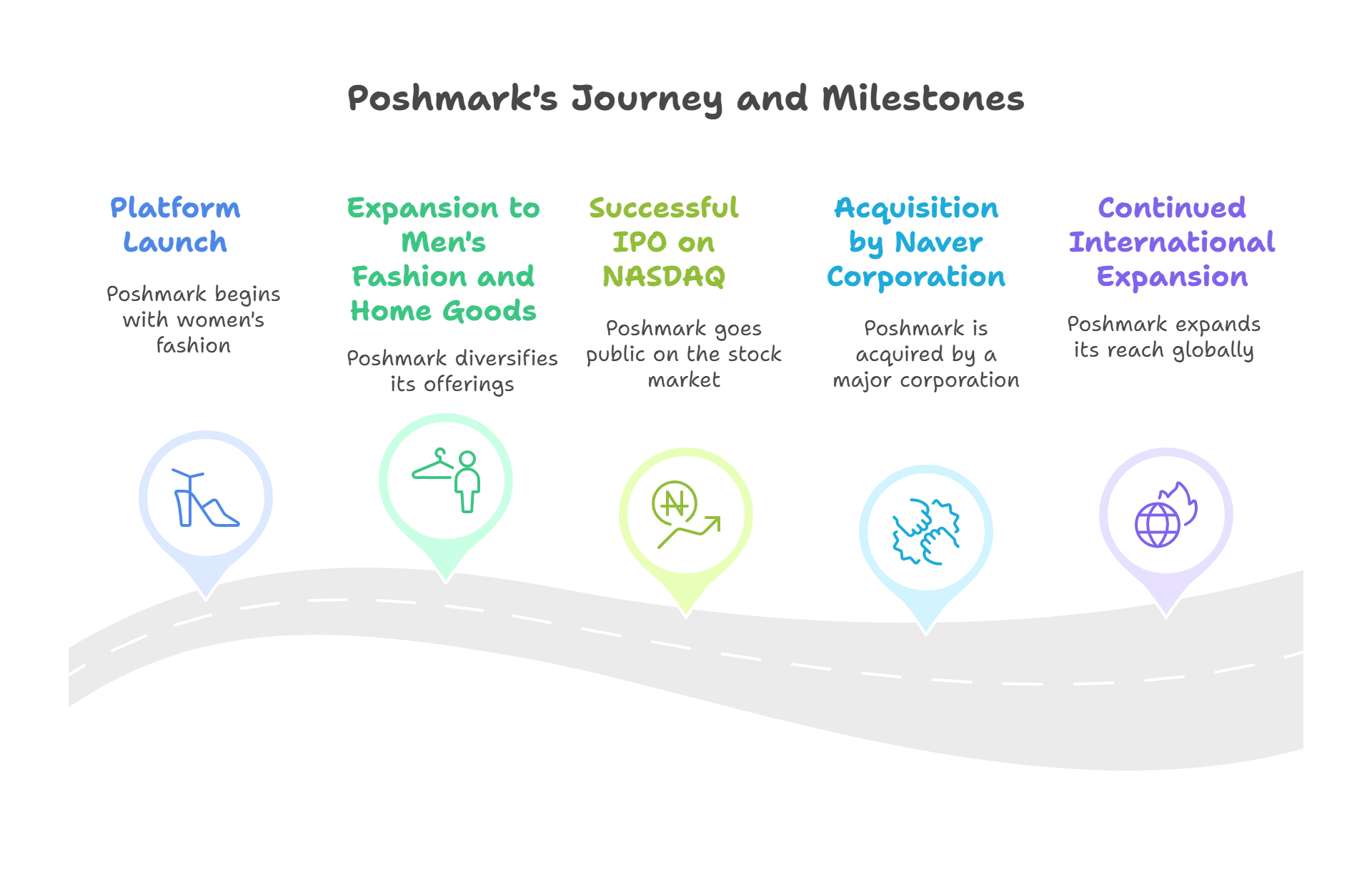
User Base, Engagement, Product Categories
As of 2025, Poshmark boasts impressive engagement metrics that demonstrate the strength of their social commerce model:
- 80+ million registered users across the United States, Canada, Australia, and India
- Over 200 million items listed on the platform
- Average session time of 25+ minutes (significantly higher than traditional e-commerce)
- Daily active users spend 27 minutes browsing and engaging
- Product categories include:
- Women’s, men’s, and kids’ fashion
- Beauty and wellness products
- Home goods and decor
- Pet accessories
- Electronics and collectibles
How Poshmark Works: Core Poshmark Business Model Explained
Asset-Light Peer-to-Peer (P2P) Structure
The genius of the Poshmark business model lies in its asset-light approach. Unlike traditional retailers or even platforms like Amazon, Poshmark owns zero inventory. Instead, they provide the infrastructure and tools for individual sellers to manage their own inventory, pricing, and customer service.
This P2P structure means:
- Sellers handle all product sourcing, photography, listing creation, and shipping
- Poshmark provides the platform, payment processing, authentication services, and dispute resolution
- Scalability is virtually unlimited since growth doesn’t require additional inventory investment
- Network effects strengthen the platform as more buyers attract more sellers and vice versa
Key Value Propositions for Buyers and Sellers
For Sellers:
- Easy listing process with mobile-first design
- Built-in social discovery through shares and followers
- Simplified shipping with prepaid labels
- Protection against fraudulent buyers
- Community support and selling tips
For Buyers:
- Authenticated items and fraud protection
- Social proof through seller ratings and community engagement
- Unique and rare items not available in traditional retail
- Sustainable shopping options supporting circular economy
- Competitive pricing on brand-name items
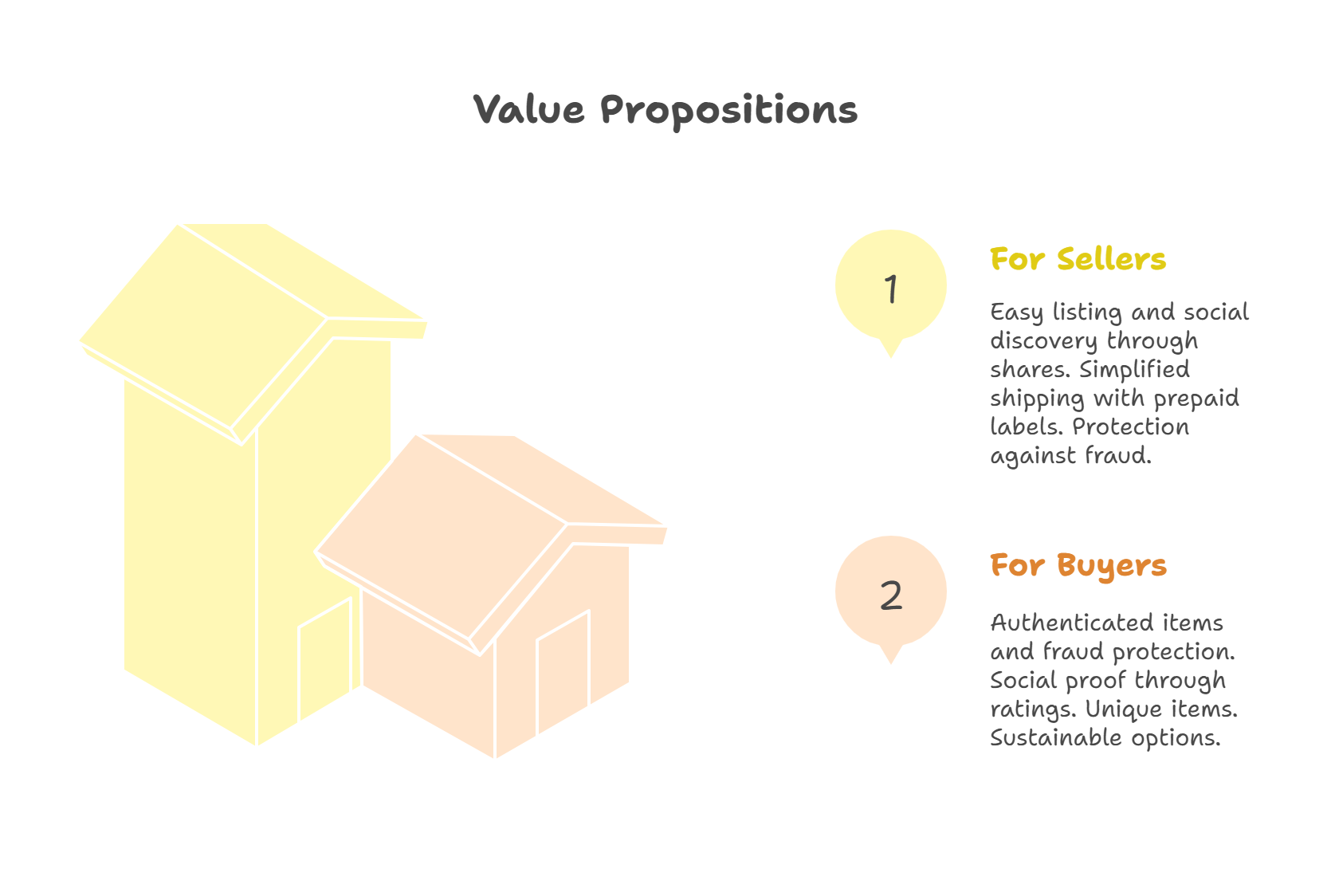
Major Social Commerce Features Driving Engagement
Poshmark’s social commerce features differentiate it from traditional marketplaces:
- Posh Parties: Themed virtual shopping events that drive discovery
- Sharing and Following: Users can share listings to their followers, expanding reach
- Bundles: Encourage multiple-item purchases with shipping discounts
- Offers and Negotiations: Create engagement through price discussions
- Comments and Questions: Foster community interaction around products
- Stories and Live Shows: Real-time content creation for sellers
How Does Poshmark Make Money? [All Revenue Streams]
Transaction (Commission) Fees – Main Revenue Driver
The primary revenue source for Poshmark comes from transaction fees charged to sellers on every completed sale. The fee structure is simple and transparent:
| Sale Amount | Poshmark Fee | Seller Keeps |
| Under $15 | $2.95 flat fee | Sale price – $2.95 |
| $15 and over | 20% commission | 80% of sale price |
Example Calculations:
- $10 item sale: Seller receives $7.05 ($10 – $2.95)
- $50 item sale: Seller receives $40 ($50 – $10 commission)
- $100 item sale: Seller receives $80 ($100 – $20 commission)
This commission structure generated an estimated $300+ million in revenue for Poshmark in 2024, representing approximately 85% of their total revenue.
Shipping Label & Buyer Fees
Poshmark generates additional revenue through their shipping label program:
- Buyers pay $7.97 for shipping on all orders (regardless of order size)
- Sellers receive prepaid USPS Priority Mail labels for easy shipping
- Poshmark keeps a portion of the shipping fee as profit margin
- This system simplifies logistics while generating consistent ancillary revenue
Wholesale Portal & Boutique Seller Revenue
The Poshmark Wholesale portal allows boutique sellers and brands to sell directly to resellers:
- Commission rates vary from 15-25% depending on volume and partnership terms
- Boutique certification fees for verified sellers
- Brand partnership revenues from official brand accounts
- This B2B component adds an estimated $25-40 million annually to Poshmark’s revenue
Advertising & Promoted Listings
Poshmark’s advertising revenue streams include:
- Promoted Listings: Sellers pay to boost visibility of their items
- Sponsored Posh Parties: Brands pay to sponsor themed shopping events
- Affiliate marketing partnerships with fashion and beauty brands
- In-app advertising placements for relevant products and services
While still a smaller portion of total revenue, advertising generated approximately $15-20 million in 2024 and is expected to grow significantly.
Case Example: Seller Cost/Margin Calculation Table
| Item Type | Sale Price | Poshmark Fee | Shipping Cost* | Net Profit | Margin % |
| T-shirt | $25 | $5.00 | $0 (buyer pays) | $20.00 | 80% |
| Designer bag | $200 | $40.00 | $0 (buyer pays) | $160.00 | 80% |
| Vintage dress | $45 | $9.00 | $0 (buyer pays) | $36.00 | 80% |
*Shipping costs are covered by buyer’s $7.97 fee
Financial Highlights & Profitability Insights
Poshmark’s financial performance demonstrates the strength of their commission-based model:
2024 Financial Highlights:
- Total Revenue: ~$350 million
- Gross Merchandise Value (GMV): ~$1.8 billion
- Take Rate: ~19.4% (revenue as percentage of GMV)
- Active Buyers: 7.9 million
- Active Sellers: 5.1 million
Revenue Breakdown:
- Transaction fees: 85% (~$297 million)
- Shipping and handling: 10% (~$35 million)
- Other services: 5% (~$18 million)
The Poshmark business model benefits from high gross margins since they don’t carry inventory costs. However, significant investments in technology, customer service, and marketing impact overall profitability. The company’s focus on building long-term user engagement over short-term profits reflects their commitment to sustainable growth in the social commerce space.
The 2025 Retail Trends Shaping Poshmark’s Business Model
Secondhand Boom, Community Influence, and Platform Trust
The resale market is projected to reach $350 billion by 2027, with social commerce playing an increasingly important role. Key trends benefiting Poshmark include:
- Sustainability consciousness: Gen-Z and Millennial consumers prioritize eco-friendly shopping
- Authenticity demand: Buyers seek genuine product reviews and real user experiences
- Community-driven discovery: Social recommendations outperform traditional advertising
- Trust through transparency: Seller ratings and authentication services build confidence
Tech Innovations – AI, Personalization, and Seller Tools
Poshmark continues investing in technology to enhance their business model:
- AI-powered recommendations improve product discovery and increase conversion rates
- Automated authentication services reduce fraud and build buyer confidence
- Advanced seller analytics help users optimize their pricing and inventory strategies
- Mobile-first features maintain competitive advantage in social commerce
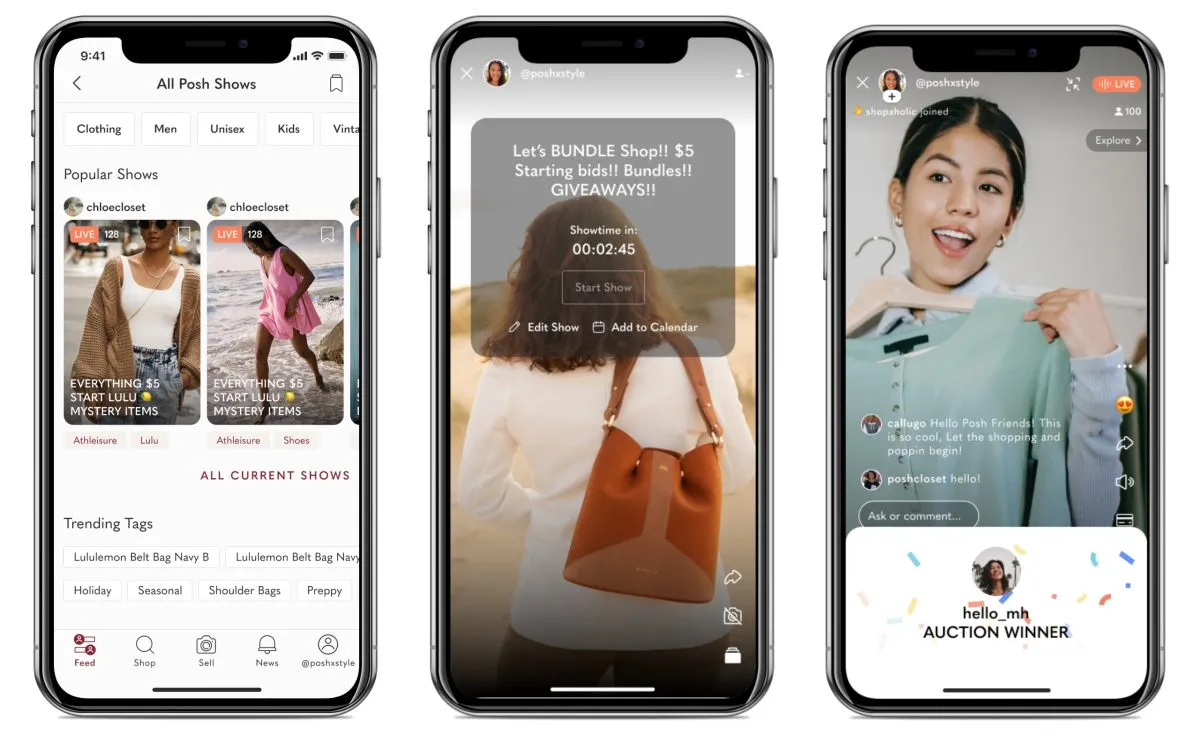
Poshmark’s business model focuses on mobile-first
Pro tips: Thinking about launching your own resale app like Poshmark? Now’s the time! With Simicart, you can easily build your own mobile app—no coding, no high costs. Just drag, drop, and launch on iOS and Android. Best part? There’s a free plan to get you started.
Poshmark Compared: Competitor Benchmarking
| Platform | Commission Fee | Shipping | Social Features | Authentication | Target Market |
| Poshmark | 20% (or $2.95 under $15) | $7.97 (buyer pays) | ★★★★★ | ★★★★☆ | Fashion-focused |
| eBay | 10–15% + fees | Variable | ★★☆☆☆ | ★★★☆☆ | General marketplace |
| Depop | 10% + 2.9% payment fee | Variable | ★★★★☆ | ★★☆☆☆ | Gen-Z fashion |
| Mercari | 10% | Variable | ★★☆☆☆ | ★★☆☆☆ | General items |
| ThredUP | N/A (consignment-based) | Variable | ★☆☆☆☆ | ★★★★★ | Curated fashion |
Poshmark’s Competitive Advantages:
- Strongest social commerce features drive higher engagement
- Simplified shipping process reduces seller friction
- Active community creates network effects
- Focus on fashion and lifestyle maintains brand identity
Areas for Improvement:
- Higher commission rates than most competitors
- Limited international expansion compared to eBay
- Authentication services lag behind specialized platforms like ThredUP
>> Explore:
- How Does Mercari Make Money Without Selling Fees?
- How Does eBay Make Money? eBay Business Model analysis
Advanced Seller & Brand Strategies for 2025
High-Performance Seller Tactics:
- Cross-listing optimization: Use tools to list items across multiple platforms simultaneously
- Data-driven pricing: Analyze sold listings to optimize pricing strategies
- Community engagement: Actively participate in Posh Parties and sharing activities
- Professional photography: Invest in quality images to increase conversion rates
- Bundle strategies: Encourage multiple-item purchases to increase average order value
Brand Partnership Opportunities:
- Influencer collaborations: Partner with top sellers for authentic product promotion
- Sponsored content: Integrate brand messaging into Posh Parties and community events
- Wholesale programs: Sell directly to resellers through Poshmark’s B2B portal
- User-generated content: Leverage customer photos and reviews for marketing
Poshmark business model FAQs
How does Poshmark make a profit?
Poshmark makes money primarily by charging sellers a fee when their items sell—a flat fee for cheaper items and a percentage of higher-priced sales. It also earns revenue from shipping label fees paid by buyers.
What percentage does Poshmark take?
For items sold for $15 or more, Poshmark charges a 20% fee. For sales under $15, they take a flat $2.95 fee.
Is it really worth it to sell on Poshmark?
If you have trending, designer, or quality items, especially fashion-related, Poshmark can definitely be worth it. The process is simple and there’s no listing fee, but keep the commission in mind. Many sellers make good money, though success often depends on your effort and what you’re selling.
What is the 3 day rule on Poshmark?
Buyers have 3 days after delivery to report any problems with their order (like damage or wrong item). If there’s no claim after 3 days, payment is automatically released to the seller and the sale is final.
What I wish I knew before selling on Poshmark?
Some key tips: Poshmark’s fee is higher than some competitors; quality items sell best; quick, clear communication and fast shipping are important; relist stale items to stay visible; and sharing your listings frequently helps sales.
What is the most popular item to sell on Poshmark?
Trendy clothes, designer brands (like Louis Vuitton, Chanel, Free People), vintage styles, sneakers, athleisure, and designer handbags are among the top-selling categories and brands on Poshmark.
What’s the trick to selling on Poshmark?
List consistently, share your closet frequently, price competitively, use offers and bundles, participate in platform events (like “Posh Parties”), and leverage social media to promote your listings for maximum visibility and sales.
Conclusion
The Poshmark business model represents a masterclass in social commerce, successfully combining peer-to-peer marketplace mechanics with engaging community features. Through their commission-based revenue structure, Poshmark generates substantial profits while providing value to both buyers and sellers in the circular economy.
Key takeaways for understanding how Poshmark makes money:
- Commission fees drive 85% of revenue through a simple, transparent fee structure
- Asset-light operations enable high margins and unlimited scalability
- Social features create network effects that strengthen the platform over time
- Multiple revenue streams including shipping, advertising, and B2B services provide diversification
- Technology investments in AI and authentication services differentiate the platform
For sellers, the 20% commission rate reflects the value provided through social discovery, simplified logistics, and fraud protection. For entrepreneurs, Poshmark’s success demonstrates the power of combining commerce with community to create sustainable competitive advantages.
As the resale market continues growing toward $350 billion by 2027, platforms that successfully integrate social commerce features with trusted marketplace infrastructure will capture the greatest share of this expanding opportunity.
Ready to Build Your Own Social Commerce App like Poshmark?
Simicart makes it simple. Our no-code builder lets you create and launch your own Shopify iOS and Android app with an easy drag-and-drop interface. It’s a fast, affordable way to tap into the growing mobile commerce market — and you can start for free.
>> Start building your app now!

